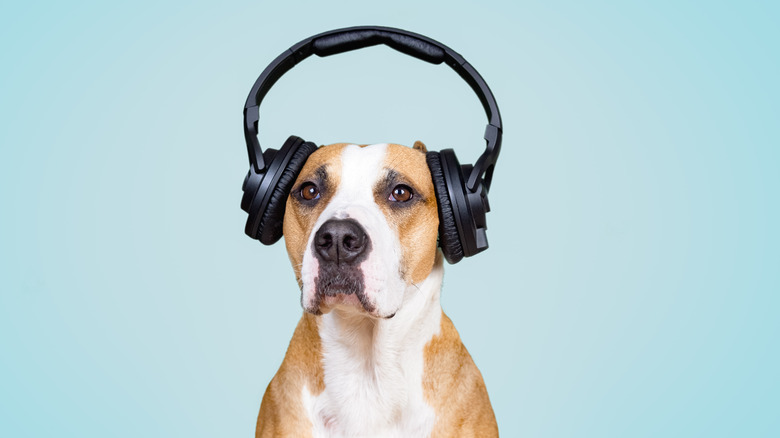How Noise-Canceling Headphones Work
If you've ever been on a crowded train, plane, or office filled with chatter, you can appreciate the utility of a noise-canceling headphone. Not only do they keep you from hearing crying babies and the roar of jet engines, they can save your ears from the self-inflicted damage of blasting your music at maximum volume to drain out the racket.
But noise-canceling headphones can be more expensive than your standard pair. Basic Apple AirPods, for instance, cost $129, while the noise-canceling AirPods Pro will run you $249 (via Apple). So how do you know if it's worth it? And how does it even work?
Basically, there are two forms of noise cancelation that these headphones use, according to Mental Floss: passive and active. Though active noise cancelation is what customers usually think of as "noise-canceling" technology, you can reduce a surprising amount of noise using just passive noise cancelation — that is, making sure your headphones have a tight seal.
Passive noise-cancelation: nothing to sneeze at
Passive noise-canceling headphones perfect that seal by using earcups, earpads, or a snug-fitting earbud to physically block out exterior sounds, according to the Wirecutter, the publication that reviews headphones for the New York Times. They will also likely use sound-absorbing materials, such as foam, in the headphone design. If the headphones are earbud style, they will be designed to slide further into the ear canal, which helps block out noises at the higher frequencies.
Though it might seem rudimentary, this form of noise cancelation is actually superior to active noise canceling in blocking out mid- or high-frequency noises such as human voices or animal sounds. If you get a set of headphones that only contain passive noise-canceling design elements, it will usually be marketed as "noise isolating" rather than noise canceling, according to Mental Floss, which claims that these types of headphones can block noises up to 20 decibels.
Active noise cancelation and "anti-noise"
Active noise-canceling headphones were invented by Bose Corporation founder Amar Bose, inspired by the thunderous roar of the engine on a jet plane, according to Mental Floss. In fact, this is exactly what active noise control, or ANC, is best at masking.
This type of noise cancelation uses a technology called "destructive interference," where headphones use a small microphone to pick up all the noise that would enter a user's ear. The headphones measure the sonic frequency of this sound and then play a noise (called, in fact, "anti-noise") 180 degrees removed from that frequency. The two opposite frequencies then cancel each other out, leaving you in blissful silence, at least up to 80 decibels, according to Mental Floss. However, this type of noise reduction works best at frequencies between 50 Hz and 1 kHz, since these lower frequencies produce longer sound waves, which are easier to neutralize with anti-noise, according to the Wirecutter. This is why the best noise-canceling headphones use both good passive design and active noise-canceling technology.


